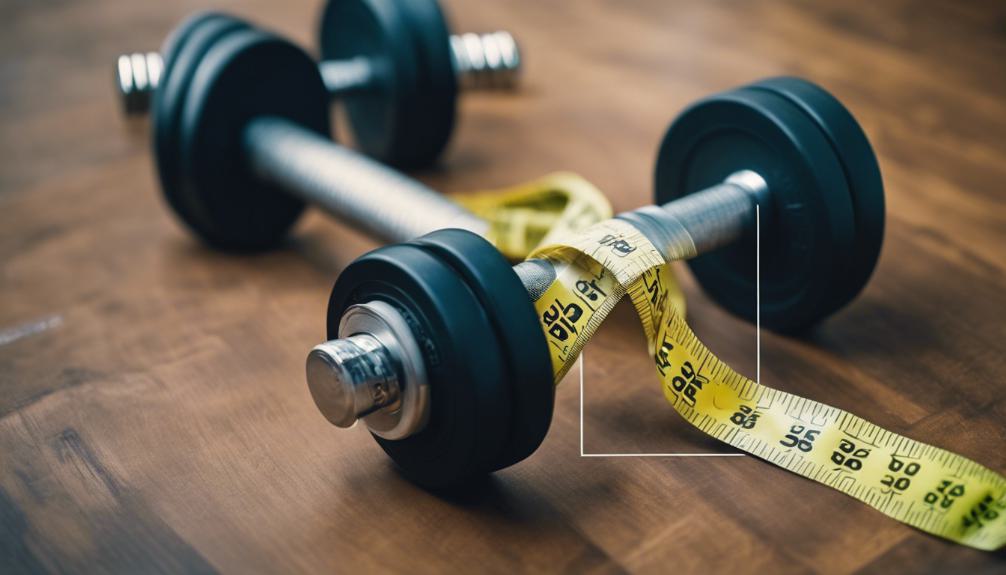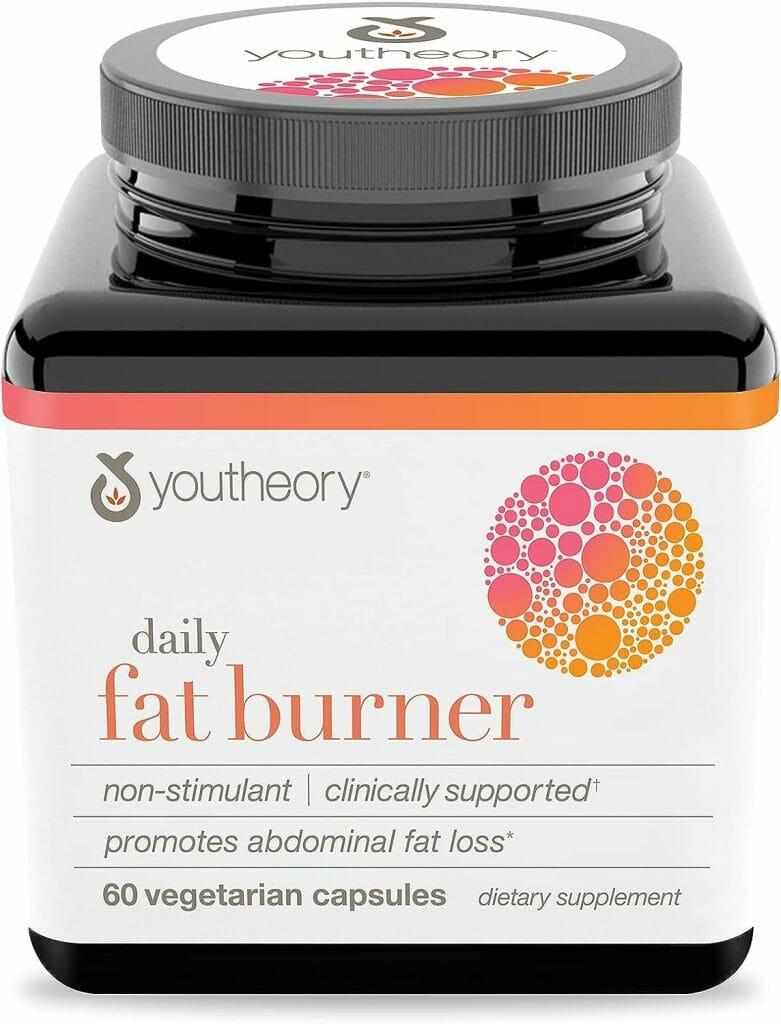Having insight into your body composition can help explain why you look and feel slimmer despite weighing the same. Losing fat while gaining muscle can give you a more toned and defined appearance. Muscle is more compact than fat, which can impact both your visual appearance and the number on the scale. Engaging in resistance training can sculpt and firm your muscles, enhancing your overall look. Factors such as water retention and clothing choices also influence how you perceive your weight and body shape. Having awareness of these elements is crucial for comprehending why the scale remains unchanged even as you experience a difference in how you feel. Discover more about what’s truly happening with your body.
Understanding Body Composition Changes
Recognizing changes in body composition involves acknowledging shifts in the proportion of fat and non-fat mass within your body. While the scale mightn’t budge, losing inches could mean muscle gain and fat loss.
This can lead to a leaner appearance where your clothes fit differently. Comprehending these changes is vital as weight alone doesn’t always reflect the transformation your body is undergoing.
Importance of Muscle Vs. Fat Ratio
Appreciating the significance of the muscle vs. fat ratio in your body can greatly influence how slim and fit you appear. Muscle is denser than fat, impacting body measurements and weight.
Increasing muscle mass can enhance metabolism, body composition, and overall appearance without significant weight loss. Grasping this ratio is key to achieving a toned physique and feeling healthier, even if the scale doesn’t show a change.
Impact of Strength Training on Appearance

Strength training can have a profound impact on your appearance by increasing muscle mass, which is more compact than fat. This change in body composition can lead to a leaner and more defined look, even if the number on the scale doesn’t budge.
The visual effects of strength training can sculpt your physique, enhancing muscle tone and contributing to a slimmer silhouette without weight loss.
Strength Training and Muscles
When engaging in strength training, you may notice a significant change in your appearance despite maintaining the same weight on the scale.
- Strength training can lead to muscle gains, creating a leaner look.
- Improved muscle tone enhances physique without weight fluctuations.
- Higher muscle to fat ratio from strength training aids in body recomposition.
- Increased metabolic rate from muscle development promotes a more sculpted appearance.
Body Composition Changes
As you engage in strength training, your body undergoes transformations in muscle mass and fat percentage, ultimately impacting how you appear physically.
Visual Perception of Weight
Gaining muscle through strength training can alter how you visually perceive your weight, creating a slimmer appearance even without a decrease on the scale.
- Strength training boosts muscle density.
- Muscles occupy less space than fat.
- Enhanced muscle definition results in a leaner look.
- Visible body composition changes from muscle gain make you appear slimmer.
Role of Water Retention in Weight Perception

Water retention plays a significant role in how you perceive your weight. Factors like high sodium intake, stress, and hormonal changes can cause temporary fluctuations.
Being aware of these effects can help you manage water retention and feel slimmer despite the scale showing the same weight.
Water Weight Fluctuations
During periods of water retention, your weight on the scale may not accurately reflect changes in body fat, potentially leading to confusion about your progress.
- Factors like high sodium intake can contribute to water retention.
- Water weight can mask fat loss progress.
- Monitoring hydration levels is essential.
- Comprehending water weight fluctuations clarifies why you may look slimmer despite stable weight.
Impact on Appearance
Appreciating how water retention impacts your weight perception can be crucial in realizing why you may appear slimmer while maintaining the same weight. Factors like high sodium intake, hormonal changes, and temporary water retention can play a role.
These fluctuations can affect how your clothes fit and alter your overall appearance, even if the number on the scale remains unchanged. Comprehending this dynamic helps explain the discrepancy between your look and weight.
Influence of Clothing Choices on Body Image
Choosing the right clothing can greatly affect how you perceive your body shape and size.
- Wearing form-fitting clothes can accentuate muscle definition, creating a leaner look.
- Loose attire may conceal muscle tone, giving the illusion of a bulkier physique.
- Clothing choices can enhance or diminish the visual impact of weight and muscle composition.
- Opting for well-fitted clothing highlights body contours, contributing to a slimmer appearance.
Psychological Factors in Weight Perception

When considering weight perception, psychological factors play a significant role in shaping how individuals view their bodies despite physical changes. Body image perception, self-awareness, and emotional well-being all influence how you interpret your weight.
Cognitive biases, societal standards, and mental health conditions can lead to feeling slimmer even when the scale shows the same number.
Practicing self-compassion and seeking support can help address these psychological factors in weight perception.
Frequently Asked Questions
Why Do I Look Thinner but Weight the Same?
You may appear slimmer despite an unchanged weight due to gaining muscle and losing fat. Muscle is denser than fat, making you look leaner. Improved body composition with more muscle and less fat can create a smaller, more defined look.
Why Does It Look Like I M Losing Weight but the Scale Stays the Same?
You might notice you’re looking slimmer even though the scale isn’t changing. This could be due to building muscle and losing fat simultaneously. Muscle is denser than fat, giving you a leaner appearance without weight loss.
Why Do I Feel Skinnier Than I Weigh?
You might feel skinnier than you weigh due to gaining muscle and losing fat, which can make you appear more toned. Improved posture, reduced bloating, and muscle definition also contribute to feeling slimmer despite the scale staying the same.
Why Do I Look Skinnier but the Scale Says I Gained Weight?
Upon appearing slimmer but the scale indicates weight gain, it’s probably because of building muscle. Your body composition shifts, gaining muscle and shedding fat can give the impression of being leaner while maintaining the same weight.
Conclusion
To sum up, alterations in body composition, muscle versus fat ratio, strength training, water retention, clothing choices, and psychological factors all play a role in how you look and feel compared to your weight on the scale.
By grasping these factors, you can better comprehend why you may appear slimmer but weigh the same.
Remember, weight is just one piece of the puzzle in relation to overall health and well-being. Keep focusing on healthy habits and overall body composition for a balanced approach to wellness.








Leave a Reply
You must be logged in to post a comment.